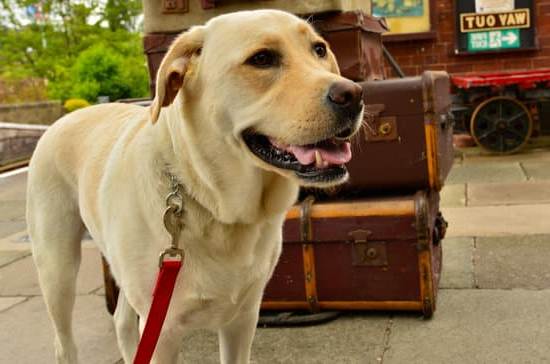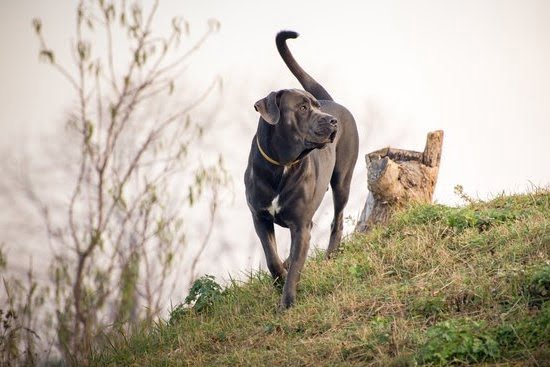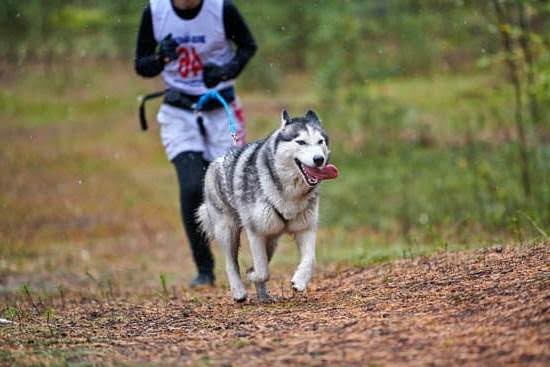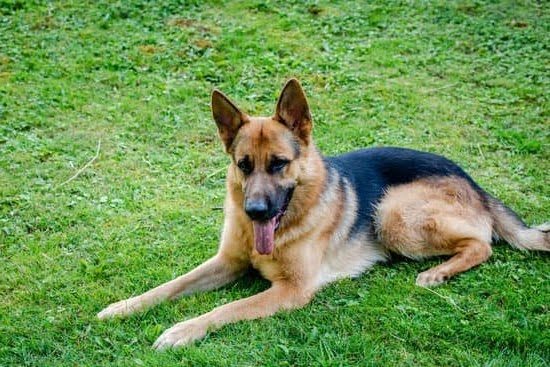Are you struggling with your dog’s aggressive behavior towards your cat? If so, you may be wondering how to train dog not to attack cat. Understanding the root cause of this aggression is vital in addressing and correcting this behavior effectively.
In this article, we will provide valuable insights and practical tips on positive reinforcement training techniques to help you create a harmonious environment for both your dog and cat. We will explore the importance of creating a safe space for your feline friend, socializing your dog with the cat, using obedience commands, addressing any past traumatic experiences, seeking professional help when needed, and staying consistent throughout the training process.
By the end of this article, you will have a comprehensive understanding of how to train your dog not to attack your cat and build a peaceful coexistence between these two beloved pets in your home. Let’s dive into the root causes of canine aggression and learn effective strategies for creating a harmonious environment for all pets involved.
Introduction to Positive Reinforcement Training
Positive reinforcement training is an effective and humane method for teaching your dog to behave appropriately around your cat. This training technique involves rewarding your dog for good behavior to encourage them to repeat it. The key is to use positive reinforcement such as treats, toys, or affection whenever your dog exhibits the desired behavior, such as being calm and non-aggressive towards the cat.
One way to implement positive reinforcement training is by using a clicker. A clicker is a small device that makes a clicking sound when pressed, serving as a signal to the dog that they have performed the correct behavior. By associating the click with a reward, such as a treat, the dog learns to associate the sound with positive outcomes. This method can be particularly effective in teaching dogs to coexist peacefully with other pets in the household.
Another important aspect of positive reinforcement training is consistency. It’s essential to consistently reward your dog for demonstrating good behavior and withhold rewards when they display aggression towards the cat. By doing so, your dog will learn over time that being calm and non-threatening leads to positive outcomes, strengthening their bond with the cat and reducing aggressive tendencies.
| Positive Reinforcement Training | Benefits |
|---|---|
| Effective and humane method for teaching dogs | Strengthens bond between dog and cat |
| Uses rewards such as treats or affection | Reduces aggressive tendencies |
| Involves consistent rewarding of good behavior | Encourages desired behavior in dogs |
Creating a Safe Space for the Cat
Designated Area
Designate an area in your home where the cat can escape to, such as a bedroom or high shelf, where the dog cannot access. Make sure this area has all of the cat’s essentials such as food, water, litter box, and toys to keep them comfortable and secure.
Vertical Space
Cats feel safer when they are elevated and away from potential threats. Consider installing shelves, cat trees, or perches at different heights in your home so that your cat can navigate freely without feeling cornered by the dog.
Separation During Training
During initial training sessions with the dog, it may be best to keep them separated from the cat altogether. This will alleviate any stress on both animals and prevent any potential confrontations while you work on socializing and training your dog to be more tolerant of the cat’s presence.
By creating a designated safe space for your cat, you are providing them with an environment where they can feel secure and at ease despite sharing their home with a potentially aggressive dog. It is an important component in ensuring the well-being of both pets during this training process.
Socializing the Dog With the Cat
Introducing a dog to a cat can be a challenging process, especially if the dog has shown signs of aggression towards the cat. Socializing the dog with the cat is an important step in addressing any aggressive behavior and creating a harmonious environment for both pets. When socializing your dog with your cat, it’s important to remember that patience and consistency are key to success.
To start, it’s essential to create a safe space for the cat where they can escape from the dog if needed. This could be a separate room or an elevated space that the dog cannot access. This will help reduce stress for the cat and allow them to feel safe and secure in their environment.
Additionally, positive reinforcement training techniques can be used to encourage positive interactions between the dog and the cat. Rewarding the dog for calm and non-aggressive behavior around the cat will help reinforce these positive behaviors and create a more harmonious relationship between the two pets.
An important aspect of socializing the dog with the cat is to closely monitor their interactions and be prepared to intervene if necessary. This will help ensure that both pets feel safe and can gradually build trust and familiarity with each other over time.
| Training Techniques | Details |
|---|---|
| Positive Reinforcement | Rewarding non-aggressive behavior with treats or praise |
| Closely Monitoring Interactions | Being prepared to intervene if necessary during interactions |
Using Obedience Commands to Control the Dog’s Behavior
Teaching Basic Obedience Commands
One of the most effective ways to train a dog not to attack a cat is by using basic obedience commands. Commands such as “sit,” “stay,” “leave it,” and “come” can be very useful in managing the dog’s behavior around the cat.
Teaching these commands will help the dog understand what is expected of them and how to behave appropriately in the presence of the cat. Consistent training and positive reinforcement are key when teaching obedience commands to the dog.
Using Positive Reinforcement
Positive reinforcement involves rewarding the dog for good behavior, such as obeying commands or showing calm behavior around the cat. Treats, praise, and toys can be used as rewards for the dog when they exhibit desirable behavior. It’s important to avoid punishment-based training methods, as these can create fear and anxiety in the dog, potentially leading to more aggression towards the cat.
Consistency and Patience
Consistency is crucial when using obedience commands to control the dog’s behavior around the cat. It’s essential for all family members to use the same commands and signals when interacting with the dog.
Additionally, patience is key during this training process, as it may take time for the dog to fully comprehend and respond to obedience commands in every situation. With consistent training, positive reinforcement, and patience, it is possible to teach a dog not to attack a cat and foster a peaceful coexistence between them in the home.
Addressing Any Past Traumatic Experiences
When attempting to train a dog not to attack a cat, it’s important to consider any past traumatic experiences that may have contributed to the dog’s aggressive behavior. Dogs may exhibit aggressive behavior towards cats if they have experienced trauma in the past, such as being attacked by a cat or witnessing a violent interaction between another dog and cat. Addressing these past traumas is crucial in effectively training the dog not to attack the cat.
To address past traumatic experiences, consider the following techniques:
- Assess the dog’s behavior: Observe the dog’s body language and reactions when in the presence of a cat. Look for signs of fear, anxiety, or aggression that may be indicative of past traumatic experiences.
- Gradual desensitization: Introduce the dog to positive and controlled interactions with the cat in a gradual manner. Start with brief supervised encounters and gradually increase the duration as the dog becomes more comfortable.
- Counter-conditioning: Use positive reinforcement techniques such as treats and praise to create positive associations with the presence of the cat. This can help replace any negative associations stemming from past traumatic experiences.
By addressing any past traumatic experiences, you can work towards creating a safe and harmonious environment for both your dog and your cat. It’s important to be patient and consistent throughout this process, as overcoming past traumas will take time and effort. If needed, seek professional help from a dog trainer or behaviorist who can provide additional guidance on addressing past traumas in dogs.
Seeking Professional Help From a Dog Trainer or Behaviorist
If you have tried the positive reinforcement training, creating a safe space for the cat, socializing the dog with the cat, using obedience commands to control the dog’s behavior, and addressing any past traumatic experiences with little to no progress in training your dog not to attack the cat, it may be time to seek professional help from a dog trainer or behaviorist. Here are some reasons why seeking professional help is crucial in this situation:
- Expertise: Dog trainers and behaviorists have the knowledge and expertise in dealing with aggressive behavior in dogs. Their understanding of canine behavior can provide valuable insights into why your dog is exhibiting aggressive tendencies towards the cat.
- Customized Training Plans: A professional can assess your specific situation and create a customized training plan tailored to your dog’s needs. They can identify underlying triggers for aggression and develop a structured program to address these issues.
- Behavior Modification Techniques: Trainers and behaviorists have access to a range of behavior modification techniques that can be effective in altering your dog’s response towards the cat. This may include desensitization exercises, counter-conditioning methods, and other proven strategies for reducing aggression.
Remember that seeking professional help does not mean you have failed as a pet owner. In fact, recognizing when you need assistance shows responsible ownership and dedication to ensuring the safety and well-being of all pets in your household. With patience, consistency, and guidance from a professional, it is possible to successfully train your dog not to attack the cat.
Monitoring Progress and Making Adjustments to Training Techniques
When training a dog not to attack a cat, it is essential to closely monitor progress and make adjustments to the training techniques as needed. This step is crucial in ensuring that the dog’s behavior continues to improve and that any setbacks are addressed effectively. By consistently evaluating the training process and making necessary changes, pet owners can help create a harmonious environment for both their dog and cat.
One way to monitor progress is by observing the interactions between the dog and the cat. Look for signs of improved behavior, such as the dog becoming more relaxed around the cat or showing less aggression. Additionally, pay attention to any triggers that cause the dog to exhibit aggressive behavior towards the cat, as this can provide insight into areas that may need further attention during training.
In some cases, making adjustments to training techniques may be necessary to address specific challenges or behaviors exhibited by the dog. This could involve modifying positive reinforcement methods, incorporating new obedience commands, or implementing additional socialization exercises. By adapting the training approach based on the individual needs of the dog, pet owners can better support their pet in learning appropriate behavior around their feline companion.
Ensuring Consistency and Patience Throughout the Training Process
In conclusion, training a dog not to attack a cat requires a combination of understanding the root cause of the aggression and implementing positive reinforcement training techniques. It is important to create a safe space for the cat where it can feel secure and socialize the dog with the cat in a controlled environment. Obedience commands can also be used to control the dog’s behavior and address any past traumatic experiences that may be contributing to the aggression.
Seeking professional help from a dog trainer or behaviorist can provide valuable guidance and support in addressing the issue. It is crucial to monitor progress and make adjustments to training techniques as needed. Consistency and patience are key throughout the training process, as changing ingrained behavior takes time and dedication.
By following these steps and being consistent in their approach, pet owners can help their dog learn to peacefully coexist with their feline companion. With patience and persistence, it is possible to modify a dog’s aggressive behavior towards cats and create a harmonious living environment for both pets.
Frequently Asked Questions
How Do I Get My Dog to Stop Attacking My Cat?
In order to get your dog to stop attacking your cat, it’s important to first address any underlying issues that may be causing the behavior. This could include fear, anxiety, or territorial aggression. Consulting with a professional dog trainer or behaviorist can be helpful in identifying the root cause and developing a training plan to modify the behavior.
How Do I Make Sure My Dog Doesn’t Kill My Cat?
Making sure your dog doesn’t kill your cat requires proactive management and training. It’s essential to supervise their interactions at all times and separate them when you can’t directly oversee their interactions. Training your dog to respond to commands like “leave it” or “stay” can also be beneficial in preventing any aggressive behavior towards your cat.
How Do I Get My Dog to Stop Tormenting My Cat?
If your dog is tormenting your cat, it’s crucial to intervene and provide a safe space for your cat where they can escape from the dog if needed. Additionally, providing separate feeding areas and resources for each pet can help reduce tension between them.
Implementing positive reinforcement training techniques with the help of a professional trainer can also aid in modifying your dog’s behavior towards the cat.

Welcome to the blog! I am a professional dog trainer and have been working with dogs for many years. In this blog, I will be discussing various topics related to dog training, including tips, tricks, and advice. I hope you find this information helpful and informative. Thanks for reading!





